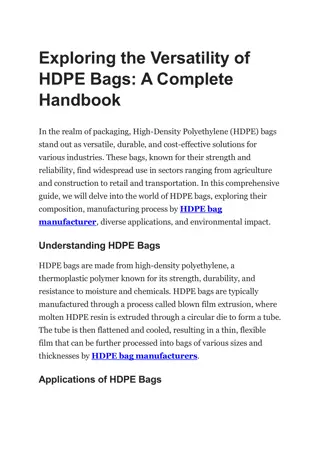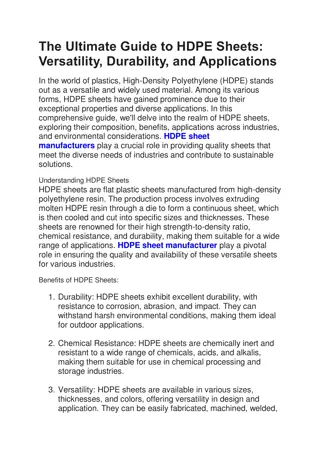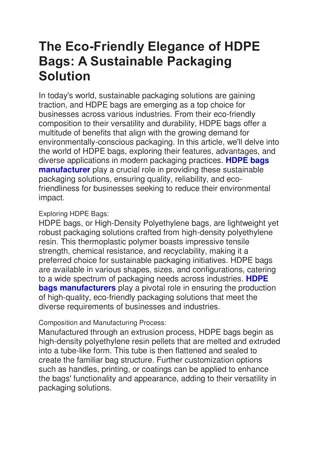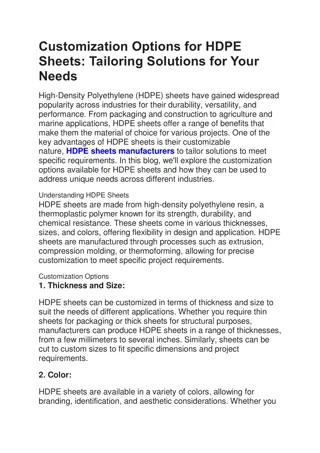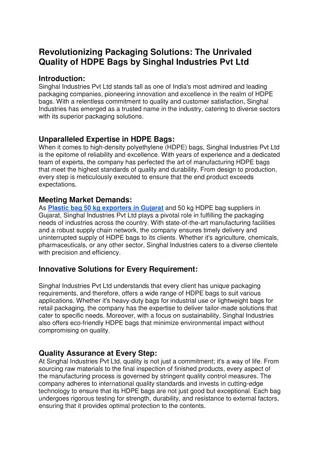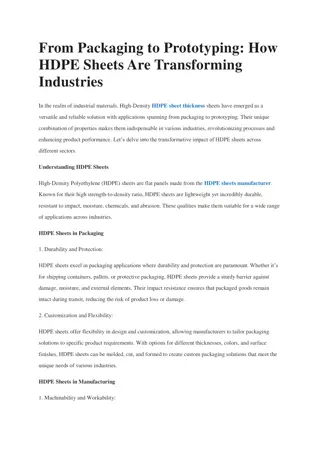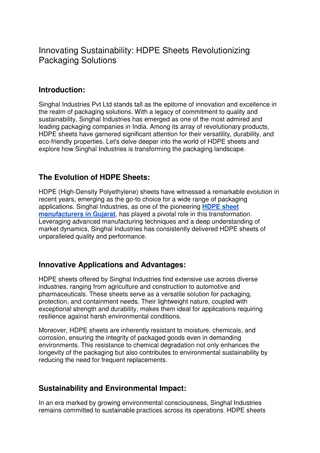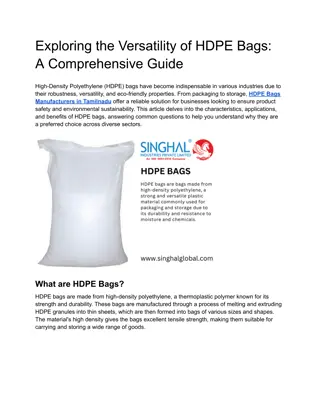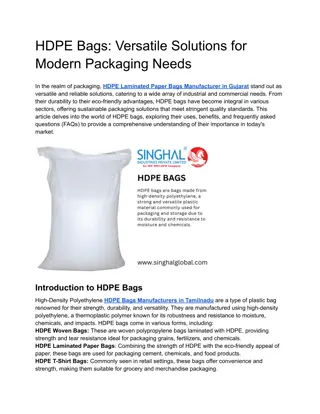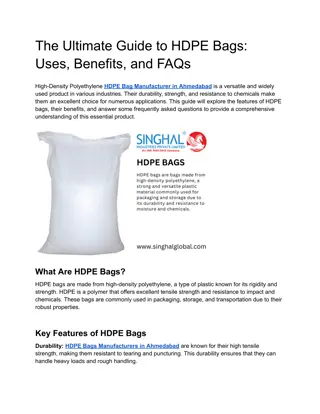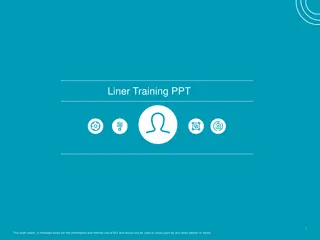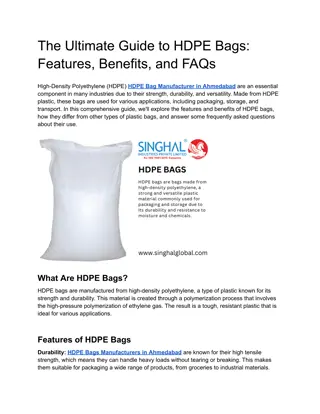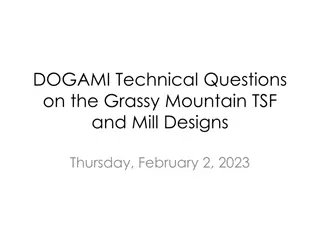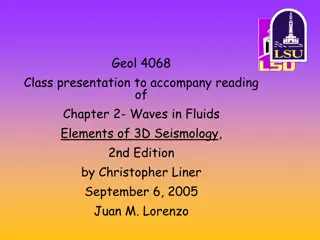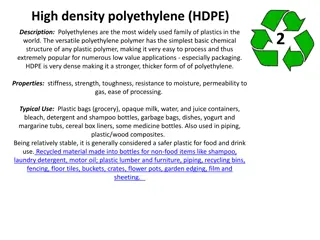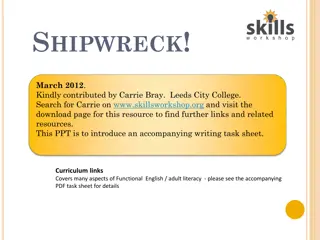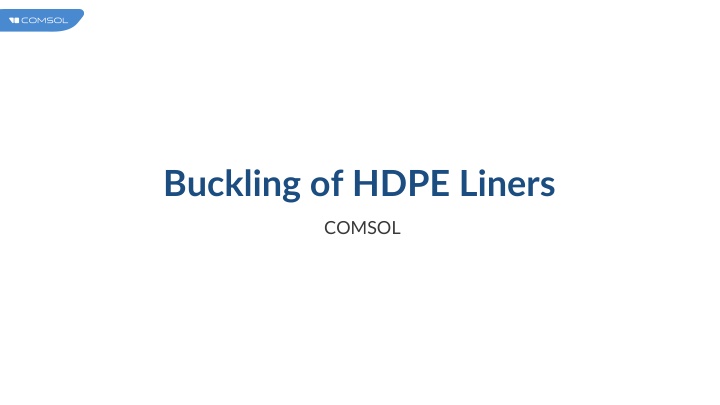
Buckling of HDPE Liners in COMSOL Simulation
"Explore the buckling behavior of High Density Polyethylene (HDPE) liners in damaged pipes using COMSOL simulation. Learn about the model definition, material properties, results, and implementation notes for accurate analysis and prediction of liner collapse. Discover how gas pressure impacts liner deformation and how to simulate consistent initial conditions for reliable simulations."
Download Presentation

Please find below an Image/Link to download the presentation.
The content on the website is provided AS IS for your information and personal use only. It may not be sold, licensed, or shared on other websites without obtaining consent from the author. If you encounter any issues during the download, it is possible that the publisher has removed the file from their server.
You are allowed to download the files provided on this website for personal or commercial use, subject to the condition that they are used lawfully. All files are the property of their respective owners.
The content on the website is provided AS IS for your information and personal use only. It may not be sold, licensed, or shared on other websites without obtaining consent from the author.
E N D
Presentation Transcript
Buckling of HDPE Liners COMSOL
Introduction High Density Polyethilene (HDPE) is used to make liners for damaged pipes. Sudden collapse of the liner can occurr during idle times, when pressure inside the pipe drops. This is caused by gas permeating between the liner and the pipe and building up pressure on the outer surface of the component.
Model Definition Under the plain strain assumption, only a section of the 1 m long liner can be modeled. The vertical diameter is made 0.2% smaller than the horizontal one, to enforce one-lobe type buckling collapse, as observed experimentally. Mirror symmetry along the vertical axis can be exploited to reduce the computational cost. The pipe is modeled as a rigid boundary. Cross-section geometry
Model Definition The innner surface of the liner is subjected to atmospheric pressure. The outer surface is subjected to the pressure of the trapped gas: The gas pressure is increased by imposing a constant inflow mass rate
Material Model The Bergstrom-Bischoff material model features a temperature dempendent stiffness: Rheology of the Bergstrom-Bischoff material model The energy factor v2 evolves in time according to:
Material Model The viscoplastic flow is characterized by the following rate multiplier: Rheology of the Bergstrom-Bischoff material model 0, 0, r, , v,f, A, res,i, ai, ni, m are the material properties.
Results The deformed shape after collapse at 278.15 K. Displacements [mm]
Results Time evolution of the pressure of the gas trapped between the pipe and the liner. Gas Pressure
Notes About the COMSOL Implementation Add an Integration operator to compute the gap volume: Use the All regions option in the Applicable Pair Region to apply the pressure on the overall external surface of the liner, simulating even permeation of the gas over the whole surface, even if the initial nominal geometry is in contact with the pipe. Add a Stationary study before the Time Dependent one in order to compute consistent initial conditions. Use the Instantaneous stiffness for the Bergstrom-Boyce material model.

